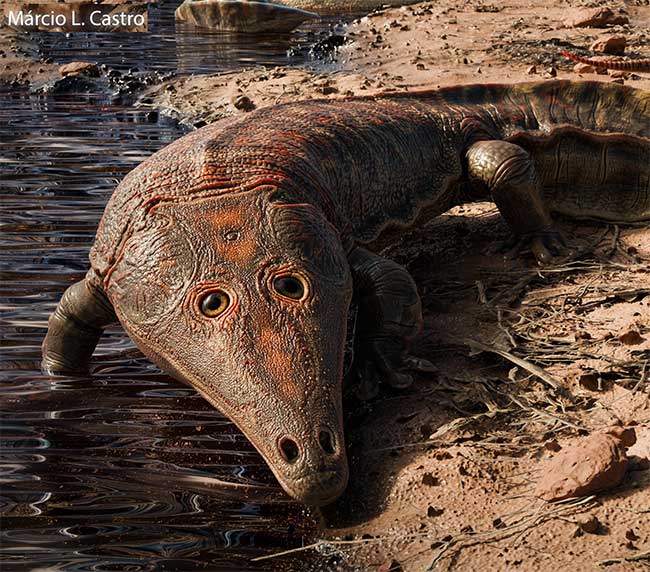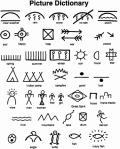This strange aquatic monster not only represents a new species but also adds an entirely new genus to the paleontological record.
Reconstructed by Brazilian scientists with a terrifying and unusual face, this creature resembles a crocodile but has smoother skin and a bizarre four-sided tail, making it a amphibious monster from the Triassic period (200-251 million years ago).
In that primordial world, its size of 1.5 meters was colossal. In comparison, the first dinosaurs—appearing at the end of this period—were only as large as modern lizards and chameleons.
A collaborative study was initiated between the Federal University of the São Francisco Valley (Brazil), Princeton University, and Harvard University (USA).

Kwatisuchus rosai – (Photo: Márcio Castro).
According to Sci-News, the new species has been named Kwatisuchus rosai, which is also an entirely new genus within the Benthosuchidae family, a lineage of crocodile-like aquatic monsters known as “temnospondyls.”
However, other species from this family were previously only found in Eastern Europe. The discovery of a species from this lineage in distant South America indicates that this lineage was much more widely distributed than we previously thought.
The fossilized skull of Kwatisuchus rosai was discovered in August 2022 from the Sanga formation by Cabral in Rio Grande do Sul, Brazil, an area that once had a complex system of rivers, lakes, and swamps in ancient times.
This sedimentary rock formation records a terrifying period in the planet’s history: an “devastated” environment following the Permian-Triassic extinction event, which is also the largest mass extinction in Earth’s history, where most marine life went extinct.
Kwatisuchus rosai was a survivor. Dated at 249 million years old, this creature lived just after the mass extinction.
The reason for this remarkable survival—despite its large size being a disadvantage—may be attributed to its high adaptability to the stressful environmental conditions faced by amphibians.
According to Dr. Estevan Eltink from the Federal University of the São Francisco Valley, amphibians are the most primitive and diverse group of four-legged animals, recorded on every continent on Earth.
Thanks to their high survival capabilities, amphibian species serve as a timeline that helps humans understand how mass extinction events have impacted the planet, as well as what may happen when the next mass extinction occurs.
Unfortunately, despite surviving the greatest disaster faced by Earth’s creatures, Kwatisuchus rosai could not leave descendants to this day.
Research on this bizarre aquatic monster has just been published in the scientific journal The Anatomical Record.





















































